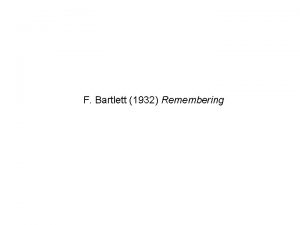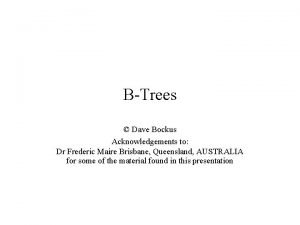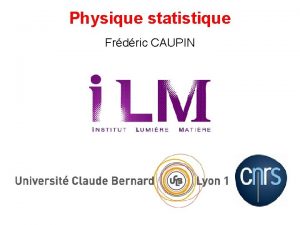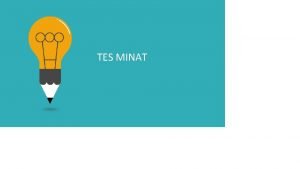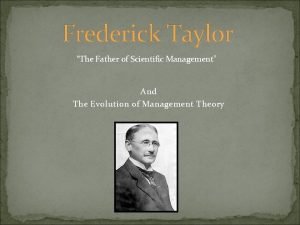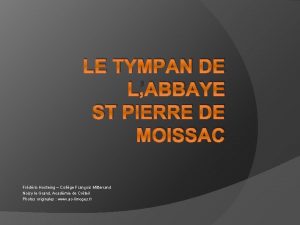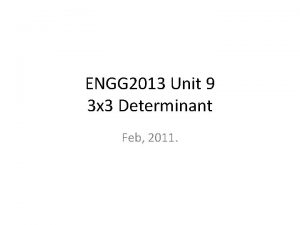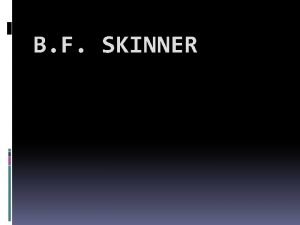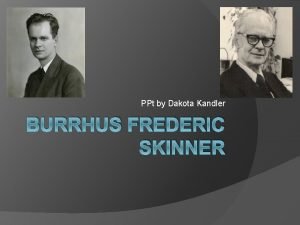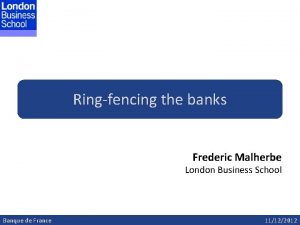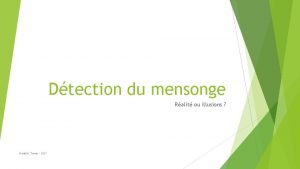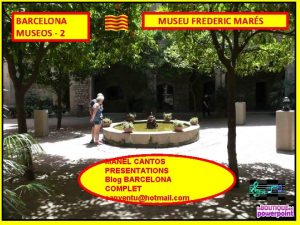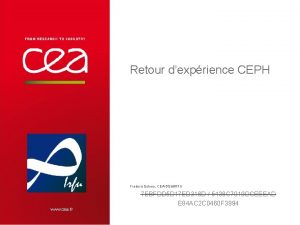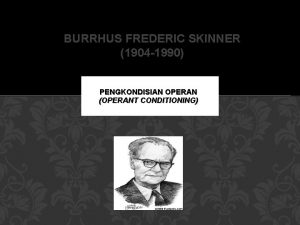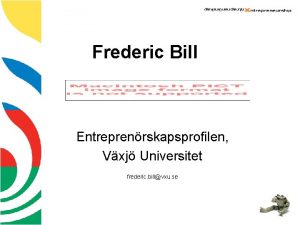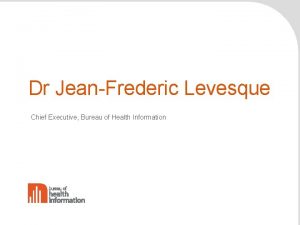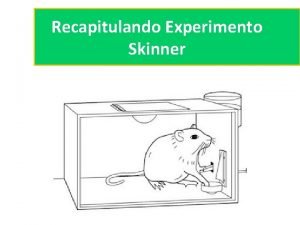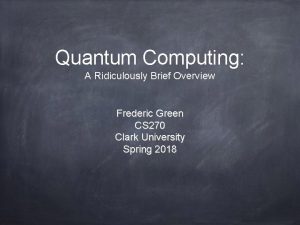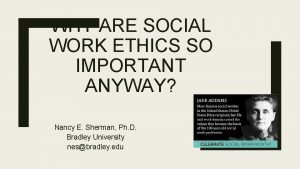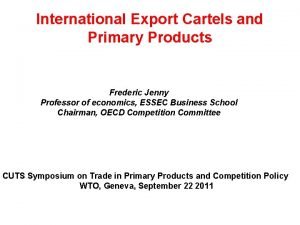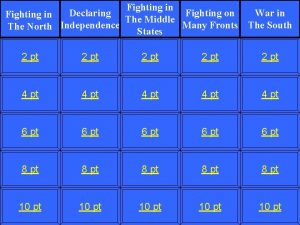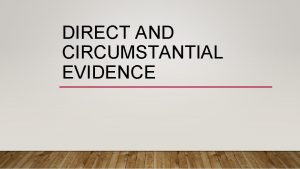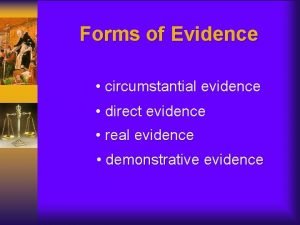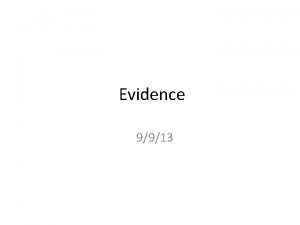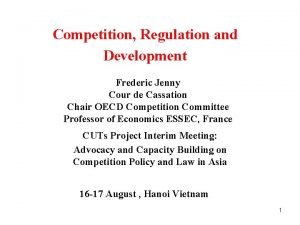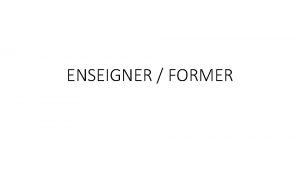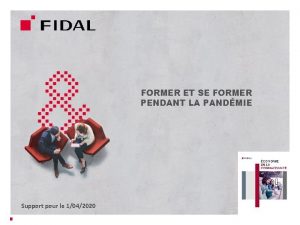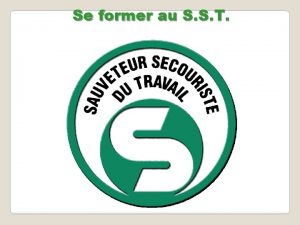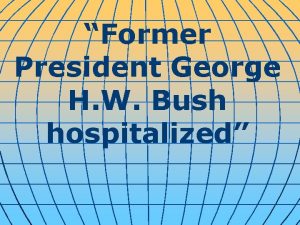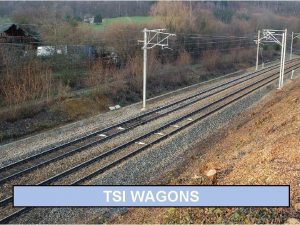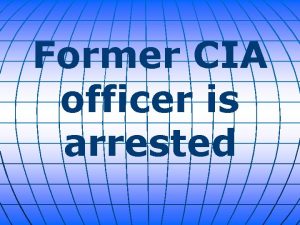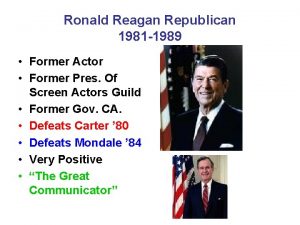Fighting cartels without direct evidence Frederic Jenny Former







































- Slides: 39

Fighting cartels without direct evidence Frederic Jenny Former Judge, French Supreme Court , 2004 -2012 Professor of economics, ESSEC Business School, Paris Chair , Competition Committee OECD Vedomosti International Session Brussels December 16 2016 1

Circumstantial evidence is employed in cartel cases in all countries. Competition law enforcement officials always strive to obtain direct evidence of agreement in prosecuting cartel cases, but sometimes it is not available. Cartel operators conceal their activities and usually they do not co-operate with an investigation of their conduct, unless they perceive that it is to their advantage to participate in a leniency programme. In this context, circumstantial evidence can be important. Almost every country making a written or oral contribution to the roundtable described at least one case in which circumstantial evidence was used to significant effect. At the same time, there are limits to the use of circumstantial evidence. Such evidence, especially economic evidence, can be ambiguous. It must be interpreted correctly by investigators, competition agencies and courts. Importantly, circumstantial evidence can be, and often is, used together with direct evidence OECD Competition Committee Roundtable Prosecuting Cartels without Direct Evidence 2006 2

The secrecy of cartels and the problem of evidence Proving the existence of a cartel agreement, whether formal or informal, poses special problems for the competition law enforcer. Cartels are usually formed and conducted in secret; their participants understand that their conduct is unlawful, and that their customers would object to the conduct if they knew about it, and so they take pains to conceal it. If an investigation into their conduct is undertaken, the participants usually do not co-operate with it, except through a leniency programme. Obtaining direct evidence of a cartel agreement -- evidence that identifies a meeting or communication between the subjects and describes the substance of their agreement -- requires special investigative tools and techniques, which the authority may lack. Thus, the competition law enforcer may be faced with the task of proving the existence of a cartel agreement without the benefit of direct evidence. 3

The secrecy of cartels and the problem of evidence It is important, however, that in all cases competition laws will impose liability for entering into an unlawful agreement only if firms have consciously acted together, whether through formal or informal means of communication. To prove a competition law violation, it must be shown that there has been a � meeting of the minds�toward a common goal or result, or, in other words, some "conscious commitment to a common scheme. “ Conversely, liability cannot be found where firms communicated purely in the form of market place action, or where firms communicated, but did not develop some "conscious commitment to a common scheme. " 4

Circumstancial evidence in countries that are relatively new to anti-cartel enforcement A country just beginning to enforce its competition law may face obstacles in obtaining direct evidence of a cartel agreement. It probably will not have in place an effective leniency programme, which is a primary source of direct evidence. There may be lacking in the country a strong competition culture, which could make it more difficult for the competition agency to generate cooperation with its anti-cartel programme. In short, the competition agency could have relatively greater difficulty in generating direct evidence in its cartel cases, which would imply that it will have to rely more heavily on circumstantial evidence. OECD Competition Committee Roundtable Prosecuting Cartels without Direct Evidence 2006 5

Strong cartel enforcement is necessary to develop a competition culture A strong competition culture is an essential component of a successful anti-cartel programme. Vigorous enforcement of the law is necessary. The competition agency should strive to generate good cartel cases in important sectors, supported by strong evidence and demonstrating the benefits to consumers of effective anti-cartel enforcement. OECD Competition Committee Roundtable Prosecuting Cartels without Direct Evidence 2006 6

Two types of circumstantial evidence: communication evidence and economic evidence. Of the two, communication evidence is considered to be the more important. Communication evidence is evidence that cartel operators met or otherwise communicated, but does not describe the substance of their communications. It includes, for example, records of telephone conversations among suspected cartel participants, of their travel to a common destination and notes or records of meetings in which they participated. Communication evidence can be highly probative of an agreement. Almost all of the circumstantial cases described by delegations included communication evidence; in some the evidence was compelling. OECD Competition Committee Roundtable Prosecuting Cartels without Direct Evidence 2006 7

Parallel behaviour and tacit agreement Over the years, courts, competition authorities and competition experts have come to accept that conscious parallelism, �which involves nothing more than identical pricing or other parallel behaviour deriving from independent observation and reaction by rivals in the marketplace, is not unlawful. This view is well grounded in economic theory. Something more than conscious parallelism is required. One formulation, developed in the United States in civil cases requires that there exist certain � plus factors, �which prove that agreement is more likely the cause of the parallel conduct than independent action. One US court described the standard in a recent decision as follows: . . . ” [W]e have required that plaintiffs basing a claim of collusion on inferences from consciously parallel behaviour show that certain � plus factors�also exist. Existence of these plus factors tends to ensure that courts punish � concerted action��-an actual agreement- � instead of the � unilateral, independent conduct of competitors”. � In other words, the factors serve as proxies for direct evidence of an agreement. 8

Plus factors: communication One important type of plus factor is that which indicates that the parties communicated about prices in a manner that permitted them to reach an agreement, or at least had the opportunity to communicate. The evidence falls short, however, of proving an explicit agreement. 9

Economic evidence : conduct and structure Economic evidence can be categorized as either conduct or structural evidence. Conduct evidence includes, most importantly, evidence of parallel conduct by suspected cartel members, e. g. , imultaneous and identical price increases or suspicious bidding patterns in public tenders. It can also include evidence of facilitating practices, though that conduct could also be characterised as quasicommunication evidence. � Structural economic evidence includes evidence of such factors as high market concentration and homogeneous products. Of these two types of economic evidence, conduct evidence is considered the more important. Economic evidence must be carefully evaluated. The evidence should be inconsistent with the hypothesis that the market participants are acting unilaterally in their self interest. OECD Competition Committee Roundtable Prosecuting Cartels without Direct Evidence 2006 10

Economic conduct evidence Conduct evidence is the single most important type of economic evidence. Careful analysis of the conduct of parties is important to identify behaviour that can be characterised as contrary to the parties’ unilateral self-interest and which therefore supports the inference of an agreement. Conduct evidence includes, first and foremost: Parallel pricing �changes in prices by rivals that are identical, or nearly so, and simultaneous, or nearly so. It includes other forms of parallel conduct, such as capacity reductions, adoption of standardised terms of sale, and suspicious bidding patterns, e. g. , a predictable rotation of winning bidders. Industry performance could also be described as conduct evidence. It includes: • abnormally high profits; • stable market shares; • a history of competition law violations. 11

Economic conduct evidence - Facilitating practices��are a subset of conduct evidence. Facilitating practices that can make it easier for competitors to reach or sustain an agreement. It is important to note that conduct described as facilitating practices is not necessarily unlawful. But where a competition authority has found other circumstantial evidence pointing to the existence of a cartel agreement, the existence of facilitating practices can be an important complement. They can explain what kind of arrangements the parties set up to facilitate the formation of a cartel agreement, monitoring, detection of defection, and/or punishment, thus supporting the � collusion story� put together by the competition law enforcer. Facilitating practices include: • information exchanges; • price signalling; • freight equalisation; • price protection and most favoured nation policies; and • unnecessarily restrictive product standards 12

Economic structural evidence 2) Evidence related to market structure can be used primarily to make the finding of a cartel agreement more plausible, even though market structure factors do not prove the existence of such an agreement. Relevant economic evidence relating to market structure includes: • high concentration; • low concentration on the opposite side of the market; • high barriers to entry; • high degree of vertical integration; • standardised or homogeneous product. The evidentiary value of structural evidence can be limited, however. There can be highly concentrated industries selling homogeneous products in which all parties compete. Conversely, the absence of such evidence cannot be used to show that a cartel did not exist. Cartels are known to have existed in industries with numerous competitors and differentiated products. 13

Circumstantial evidence: Happyland Guidelines on cartels According to the. Guideline on Cartel of Competition Authority in Happyland, it will consider the following as cartel indicators. None of these factors are conclusive on their own but the presence of several may lead to finding of a cartel (holistic approach): • Small number of business actors and high concentration market (structural) • Comparable size of those business actors (structural) • Homogeneous products (structural) • Multiple contacts between competitors (conduct) • Overstock/oversupply of products (conduct) • Affiliation between competitors (structural) • High entry barriers (structural) • Stable and inelastic demand (structural) • Buyers have no counter-vailing power (structural) • There is regular information exchange between competitors (conduct) • There is a regulated price or contract (conduct) 14

The proper use of economic evidence In order to identify economic evidence that is useful , the competition authority should have a good sense of the appropriate model representing what the investigated firms would have done if they had acted independently (ie. without agreeing on a common action) First, the authority must identify the set of actions that can be characterised as unilateral, non-cooperative best response behaviours in a given case. Then, and only then, can it identify actions that are inconsistent with that behaviour and thus support the hypothesis that an illegal cartel was formed. In other words, actions compatible with unilateral, non-cooperative best response behaviour serve as a benchmark to which a firm� s behaviour can be compared during the period of suspicious activity. 15

A holistic approach to circumstantial evidence. One delegate described the methodology for evaluating circumstantial evidence as like an impressionist painting, comprising many dots or brush strokes which together form an image. Another likened the process to a jig-saw puzzle. In this way, circumstantial evidence, which by definition does not describe the specific terms of an agreement, can be better understood. The materials submitted for the roundtable described a few cases in which courts declined to use this holistic approach, requiring instead that each item of evidence be linked directly to a specific agreement. The result was that the cases failed. (…) On balance, the holistic approach is much preferable to a requirement that each item of circumstantial be linked directly to a specific agreement. OECD Competition Committee Roundtable Prosecuting Cartels without Direct Evidence 2006 16

Circumstantial evidence and standard of proof In most countries, cartels (and other violations of the competition law) are prosecuted administratively. The principle administrative sanctions applied to this conduct are fines, usually only assessed against organisations but sometimes against natural persons, and remedial orders. In a minority of countries, but a growing one, cartels are prosecuted criminally. In most instances the burden of proof facing the competition agency is higher in a criminal case. The result is that it is usually more important that direct evidence of agreement be generated in these cases. The United States has long used the criminal process in the cartel cases prosecuted by the government, and virtually all of its cases are built on direct evidence. Still, circumstantial evidence is admissible, and useful, in that country and elsewhere. OECD Competition Committee Roundtable Prosecuting Cartels without Direct Evidence 2006 17

Circumstantial evidence and the courts A few jurisdictions in which there has been judicial review of decisions by competition agencies in cartel cases reported that courts sometimes view cases built on circumstantial evidence with scepticism. In this regard, as more cases are appealed to courts, the standards that they apply to circumstantial evidence are continuing to evolve. Hopefully, courts will come to see that circumstantial evidence subjected to sound economic analysis and viewed holistically can be highly probative. OECD Competition Committee Roundtable Prosecuting Cartels without Direct Evidence 2006 18

But no distinction should be made between direct and circumstantial evidence Circumstantial evidence is of no less value than direct evidence for it is the general rule that the law makes no distinction between direct and circumstantial evidence but simply requires that before convicting a defendant the jury must be satisfied of the defendant’s guilt beyond a reasonable doubt from all of the evidence in the case. *** In order to prove the conspiracy, it is not necessary for the government to present proof of verbal or written agreements. Very often in cases like this, such evidence is not available. You may find that the required agreement or conspiracy existed from the course of dealing between or among the individuals through the words they exchanged or from their acts alone. 1) Instruction to the jury in the Auction House case ( Sotheby and Christie) Available on the web site of the American Bar Association, at: http: //www. abanet. org/antitrust/committees/criminal/taubman. doc. 19

Case 1: Bid rigging detection and circumstantial evidence - Facts of the case - 1) Seven firms are in the lumber and plywood business; - 2) The relevant government office offers for sale at public auction the various tracts of timber scheduled for cutting; - 3) Lumber and plywood manufacturers receive announcements sufficiently in advance of each sale so that, as potential buyers, they may decide whether and how much to bid. The announcement indicates the quality, quantity, and location of the timber, the difficulty of logging, hauling distances, road-building requirements, climate and weather conditions, and other factors that may or may not make a particular sale attractive. - 4) The seven firms who have operated for a long time in the area are in a position to supplement the public announcements with their own knowledge of the timber and terrain. 20

Case 1: Bid rigging detection and circumstantial evidence - Facts of the case - 8) From that time this new ( non competitive ) bidding pattern continues. - 9) There is evidence that managers or agents of the seven firms began meeting from time to review the government's forecasts of upcoming sales. At these meetings the firms discussed among themselves which of the sales would be most interesting to each respective bidder. But there is no evidence that they decided anything. - 10) The government is unable to introduce direct evidence of an express agreement, but argues that the circumstantial evidence proved the existence of the tacit agreement. More specifically it argues that no matter how self-evident the economies of the bidding conduct of the firms may have been, independent pursuit of self interest could not overcome the inference of collusion which is almost compelled by the methodical manner in which the firms took turns acquiring without substantial competition most of the various cutting contracts offered by the 21 Forest Service during the period covered by the indictment.

Case 1: Bid rigging detection and circumstantial evidence - Facts of the case - 5) For a number of years several of the seven firms submit competing bids for each tract of timber scheduled for cutting. This period is marked by intensely competitive bidding, sometimes bringing into government coffers prices three times the appraised value of the timber offered in the auctions. - 6) This "bidding war" comes to a halt on January 1 2010 , when firm A “is surprised" to find no one bidding against it at an auction of a small offering of government timber. - 7) Firm A decides "to experiment", and later that same day offers no bid against firm B on another sale, with the result that Firm B takes the second sale at a nominal figure over the appraised price. 22

Case 1: Bid rigging detection and circumstantial evidence: the defendants’ arguments - A) In a general way, the extent of a firm's interest in a future sale could have been predicted by anyone familiar with the firm's hauling distances, its product mix, its manufacturing capacity, and the other factors that determine a sale's relative desirability to that firm. - B) The firms point to the undisputed economic and geographic factors relevant to any bidding on timber by the local operators, and argue that there was no conspiracy just the exercise of ordinary common sense by individual bidders who saw no reason to throw their money away, and who were under no legal duty to do so. - C) The firms argue that it must be shown that the conspiracy was knowingly formed, and that they willfully participated in the unlawful plan and that there is no such evidence. - D) The government is unable to provide proof of an agreement 23

Case 1: Bid rigging detection and circumstantial evidence: The court’s decision - This case summarizes the facts of the USA v. Champion International Corporation case (557 F. 2 d 1270 1977 -1 Trade Cases 61, 442, 1 Fed. R. Evid. Serv. 716) - The defendants were convicted of engaging in a combination and conspiracy in restraint of trade. The specific charges were that they entered into a continuing agreement, understanding and concert of action: “ - (1) to eliminate competitive bidding for United States Forest Service timber; - 2) to allocate United States Forest Service timber among themselves; - (3) to fix, reduce, and stabilize the price paid for United States Forest Service timber at or near the minimum acceptable bid set by the United States Forest Service. 24

Case 1: Bid rigging detection and circumstantial evidence: the court’s decision - The trial court agreed with the defendants that a new bidding pattern had developed by "normal economic forces", presumably in a noncollusive evolution, and it "delighted" the bidders. - The court went on to note that for the next two or three logging seasons the defendants were able to buy most of the sales they wanted at prices approximating the government's appraised prices. (If a sale did not bring at least the appraised price, the government would cancel the sale. ) - But despite the innocent beginnings of the noncompetitive bidding, the trial court found collusion in its continuation. 25

Case 1: Bid rigging detection and circumstantial evidence: the court’s decision - The court found that the circumstantial evidence proved the existence of the tacit agreement - The court found that the meetings were not innocent contrary to what the defendants had argued. It held that “In a general way, the extent of an individual operator's interest in a future sale could have been predicted by anyone familiar with the operator's hauling distances, his product mix, his manufacturing capacity, and the other factors that determine a sale's relative desirability to that operator. However, the defendants did not leave the exchange of this information to chance. During the time covered by the indictment the defendants advised each other about the future sales upon which they were most likely to bid. Whether or not anyone ever agreed at those meetings to bid or to refrain from bidding in any way, there was no doubt that the defendants "had an understanding" about bidding. 26

Case 2: Parallel price increases and tacit agreement 1) In the chemical production, product X is a mass-produced product sold to paper companies. X is a homogenous good ( little differentiation) 2) The top three producers of X account for about 70% of the market. Altogethere are 8 firms producing X 3) The market for X is quite difficult for the suppliers because the buyers ( the paper manufacturers) have a lot of buying power. As a result the price of product X is declining even though the cost increases. 4) All 8 manufacturers belong to the trade association of X producers which holds frequent meetings among its members 5) Several meetings are attended by 7 of the 8 firms during a ten months period starting on January 1 st 2010. Senior managers participate In those meetings and they exchange information and opinions about how to stop the decline in the price of product X and how to increase its sales price 27

Case 2: Parallel price increases and tacit agreement 5) On June 10, 2010, the 8 firms hold a meeting during which the three majors express their intention of increasing their price and ask the remaining five firms to follow the price increase. It appears that the three largest firms have entered an agreement. 6) None of the remaining 5 firm express disapproval of the price increase by each of the three major companies. But there is no proof that these 5 firms agree to raise their price. 7) Following the meeting of July 1 st 2010, each of the three main firms increase their price. 8) On August 21 2010, each of the 5 other firms increase their price. 28

Case 2: Parallel price increases and tacit agreement: the court’s decision This case is very close to the Toshiba Chemical case in Japan. In its judgment the Tokyo High Court on September 25, 1995 stated 1) that it was not necessary to prove an explicit agreement for the Japan Antimonopoly law to apply. The court gave the following reason for this interpretation: � By the nature of such an agreement as � Unreasonable Restraint of Trade, � companies usually try to avoid making such an agreement explicitly to the public. If we interpreted that explicit agreement is necessary to prove � Unreasonable Restraint of Trade, �the entrepreneurs could easily get around the hands of the law, and therefore it is obvious that such an interpretation is not appropriate in reality. � Thus the mere existence of a tacit agreement should be considered sufficient to prove a � ”liaison of intention” ( or a “ meeting of the minds”). The court said � “The said “liaison of intention” means that an entrepreneur recognizes or predicts implementation of the same or similar kind of price-raising among entrepreneurs, 29 and accordingly intends to collaborate with such price-raising”.

Case 2: Parallel price increases and tacit agreement: the court’s decision In its judgment the Tokyo High Court on September 25, 1995 stated 2) That in order to prove a “liaison of intention” ( or “ a meeting of the minds”), � though the mere recognition or acceptance of an entrepreneur� s price-raising by another entrepreneur is not sufficient, explicit agreement binding the related parties is not necessary. In other words, “� liaison of intention”� can be proven by showing mutual recognition of other entrepreneurs�priceraising and tacit acceptance of such price-raising by another. 30

Case 2: Parallel price increases and tacit agreement: the court’s decision In its judgment the Tokyo High Court on September 25, 1995 stated 3) As regards the proof of a tacit agreement, the court in the Toshiba Chemical case stated: “Recognition and intention of the entrepreneurs should be considered by examining various circumstances before and after the priceraising, and then evaluation of whethere is mutual recognition or acceptance among entrepreneurs regarding the price-raising or not. � Thus, in the absence of any explicit, mutually binding agreement, the existence of a tacit agreement may be proven by indirect evidence attesting to a) the existence of prior exchange of information and opinions among the parties concerned; b) the content of negotiations among the parties concerned; and c) a concerted act as a result. 31

The use of indirect evidence in Japan A cartel agreement is generally reached behind closed doors among entrepreneurs. It is a very important challenge for a competition authority to determine how to detect and prove the existence of such an agreement. As entrepreneurs have recently been more skillful in establishing cartel agreements for fear of being prosecuted by competition authorities, it is becoming more and more difficult to detect direct evidence of agreement in a cartel. Thus, in cartel cases without direct evidence, it is essential to prove the existence of cartels reasonably by the accumulation of relevant facts which are established based upon indirect evidences. The � JFTC� , bases its approach on theory that explicit agreement among the entrepreneurs is not necessary to prove a cartel agreement; i. e. , � liaison of intention, �and a tacit agreement suffices. In the Toshiba Chemical case, which involved a cartel without direct evidence, the Tokyo High Court recognised this theory. 32

Establishing the proof of a tacit agreement in Japan Different cases require different forms of evidence to prove the existence of a � liaison of intention. �In particular, judgment on a tacit � liaison of intention�has to be made on a case-by-case basis. The three criteria identified in the Toshiba Chemical case would require that the following indirect facts, for example, be found: • Existence of prior exchange of information and opinions among the parties concerned − Frequent meetings prior to the price increase − Telephone conversation or e-mail on such meetings • Content of negotiations among the parties concerned − Current condition of the industry − Exchange of information on current price, etc. − Declaration of intention to raise the price − Discussion of measures to be taken against discounters • Concerted act as a result − Actual price-raising by the entrepreneurs − Entrepreneurs� pricing decision process 33

Case 3: economic evidence and communication evidence Facts of the case: 1)The production of an industrial product is highly concentrated ( there are just a few producers) 2) The product is homogeneous 3) Price is the most important feature of competition 4) Several times in the relevant period the producers raise their list prices by identical amounts and within close time frames. 5) There are high fixed costs in the industry 34

Case 3: economic evidence and communication evidence Facts of the case 5) There is substantial excess capacity 6) The increases were not prompted by any change in costs or demand, and their result was to attract a new entrant. 7) There were a series of meetings and communications in which prices were discussed. 8) Internal records of the participants indicated that they typically had knowledge of one another’� s pricing policies that they could not have acquired by public means. 35

Case 3: economic evidence This case is substantially the Flat Glass Antitrust Litigation, 385 F 3 d 350, 359 -60 (3 d Cir. 2004) in the US. The Departement of Justice relied on several structural economic evidence ( on concentration, high fixed costs, excess capacity) and several conduct economic evidence ( simultaneity of increases in proce, the fact that the price increases were not justified by costs or demand variations). But the court said that while this evidence was important, it was not sufficient in this case: � The most important evidence will generally be non-economic evidence � that there was an actual, manifest agreement not to compete. � � There was also ample evidence of this kind. There had been a series of meetings and communications in which prices were discussed. Internal records of the participants indicated that they typically had knowledge of one another� s pricing policies that they could not have acquired by public means. The court held that in its totality the circumstantial evidence was sufficient 36 to support the finding of an unlawful agreement.

Conclusion - Competition law is grounded in economic theory - Therefore the implementation of competition law requires a combination of legal and economic expertise. - There is now a consensus on the fact that a rule of reason ( or effect’s based approach ) to competition law is more appropriate than a legalistic « per se » approach. - To build a competition culture competition authorities need to have a good enforcement record - But finding evidence of collusive behaviour in countries where competition law enforcement is not so much developed requires the use of « circumstantial evidence » 37

Conclusion Competition authorities should be vey cautious about how they use such evidence They should ensure that when they base themselves on circumstantial evidence , they can demonstrate why collusion is more likely than without the circumstancial evidence; Competition authorities should also keep in mind the standard of proof that judges require to establish the existence of a competition law violation 38

Thank you very much for your attention Frederic. jenny@gmail. com 39
 Arellano felix brothers
Arellano felix brothers Frederic sutter
Frederic sutter Esperimento di bartlett
Esperimento di bartlett Global science forum
Global science forum Frederic maire
Frederic maire Frederic murray
Frederic murray Frédéric caupin
Frédéric caupin Tekla justyna chopin
Tekla justyna chopin Tujuan tes minat
Tujuan tes minat Father of scientific management?
Father of scientific management? Frédéric hosteing
Frédéric hosteing Volume of parallelogram formula
Volume of parallelogram formula Venice time machine
Venice time machine Bf
Bf Kate chopin accomplishments
Kate chopin accomplishments Ceip frederic mistral
Ceip frederic mistral Yvonne blue
Yvonne blue Frederic malherbe
Frederic malherbe Frederic tomas
Frederic tomas Frédéric neyrat
Frédéric neyrat Frederic mars
Frederic mars Frederic schaer
Frederic schaer Burrhus frederic skinner (1904-1990)
Burrhus frederic skinner (1904-1990) Frederic bill
Frederic bill Frederic pin sas
Frederic pin sas Bridge over troubled water songfacts
Bridge over troubled water songfacts Jean frederic levesque
Jean frederic levesque Skinner experimento
Skinner experimento Frederic rimbaud
Frederic rimbaud Frederic green
Frederic green Reamer ethical decision making model
Reamer ethical decision making model Who’s the author of “without title”?
Who’s the author of “without title”? Without title poem by diane glancy
Without title poem by diane glancy Alliteration in keeping quiet
Alliteration in keeping quiet Primary evidence vs secondary evidence
Primary evidence vs secondary evidence Jobs vancouver
Jobs vancouver Class vs individual evidence
Class vs individual evidence Primary evidence vs secondary evidence
Primary evidence vs secondary evidence Are fibers class evidence
Are fibers class evidence Genetic fallacy definition
Genetic fallacy definition


